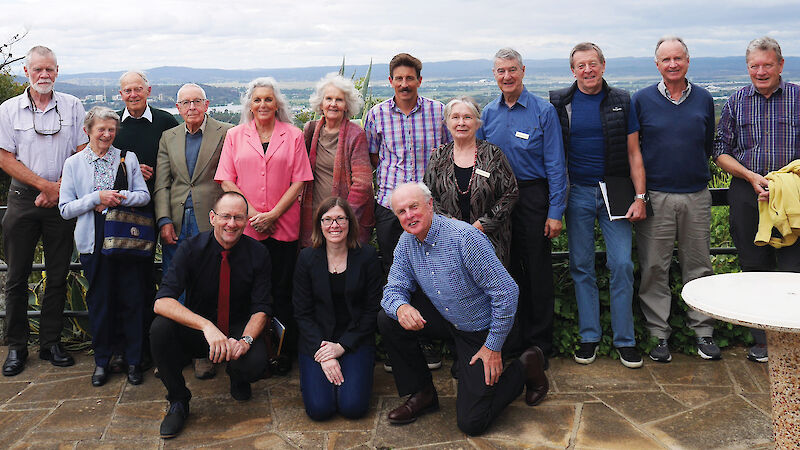The aim of the collaborative project between the Geoscience Australia Library and Antarctic Geoscience team, was to make the notebooks discoverable, accessible and reusable to a worldwide audience (see Australian Antarctic Magazine 31: 25, 2016).
Over five and a half months, 57 online volunteers from around Australia worked on the Australian Museum’s DigiVol website to transcribe 87 field notebooks, containing nearly 5500 pages of detailed observations, geological sketches and photographs of Antarctica. The bulk of the transcriptions were then validated across the next 10 months by retired geologist Ian Barwell. This rigorous two-step process ensured that the final transcriptions reflected a high level of accuracy and scientific robustness.
The scans of the notebooks and accompanying transcriptions are available from several locations on the internet, including Geoscience Australia’s eCat portal, the Biodiversity Heritage Library and through the Geoscience Australia Library catalogue (see box below).
Accompanying the transcribed notebooks is a series of short films featuring interviews with the original geologists, who bring the content of the notebooks to life through their reminiscences of their time on the frozen continent. Local geologists David Trail, Ian McLeod, Bob Tingey and John Bain, have been enthusiastic supporters of the project, and their involvement in the milestone events and interviews have enriched the project.
The Antarctic field notebooks project is Geoscience Australia’s first formal citizen science project partnering with the public. The success of the project highlighted the valuable part that volunteers can play in unlocking scientific data and in making existing knowledge more accessible and discoverable.
The volunteers also benefited from the experience.
“The major satisfaction that I attained from working on the Antarctic notebooks was that I played a small part in making the work that these geologists had undertaken in Antarctica 50 to 60 years ago, available to the rest of the world,” volunteer Teresa Van Der Heul said.
“[It was] an honour to put the notes to print, so that others may also read them; so that our great grandchildren and beyond will know the sacrifices that certain people went through to make the world such a great place to live in,” volunteer Ian Barwell said.
The Antarctic field notebooks are now available to a new generation of Antarctic scientists from around the world.
Jane Black and Chris Carson
Geoscience Australia
View the notebooks online
Geoscience Australia’s geological Antarctic Field Notebooks are available to view online.
On the Geoscience Australia website each notebook record contains:
- PDF scans of the original notebook
- PDF of the notebook transcription
- CSV file with TEI (Text Encoding Initiative) tags of transcription
Search for the notebooks in the search field using the terms ‘Antarctica’ and ‘notebook’.
The Biodiversity Heritage Library site will eventually display all 87 notebooks and 31 are currently available.

